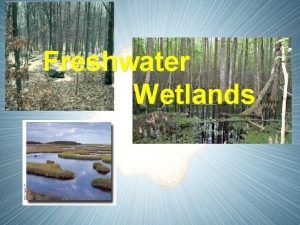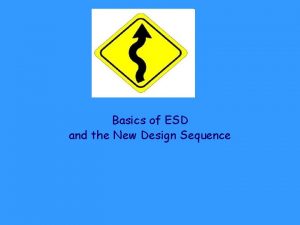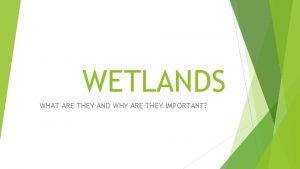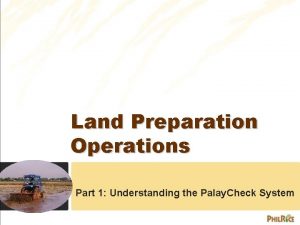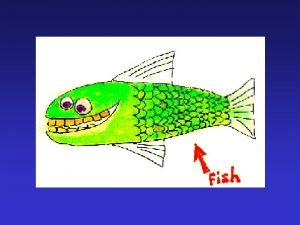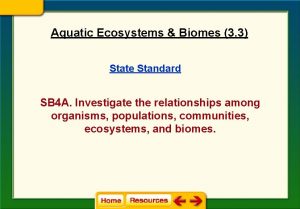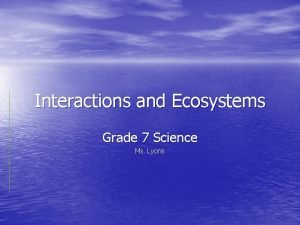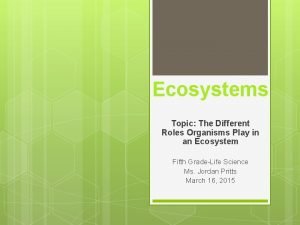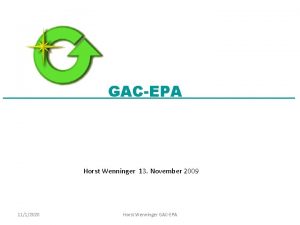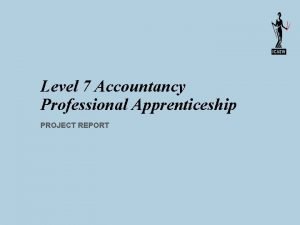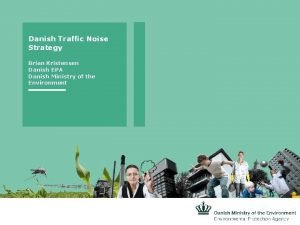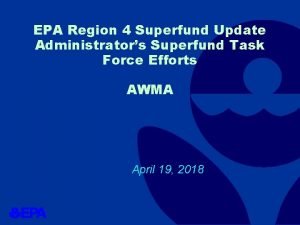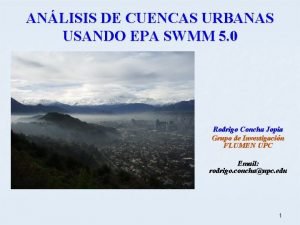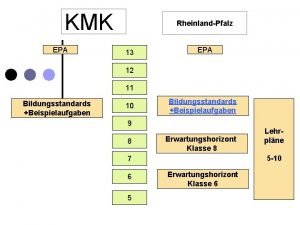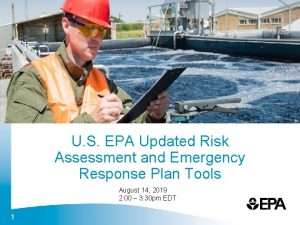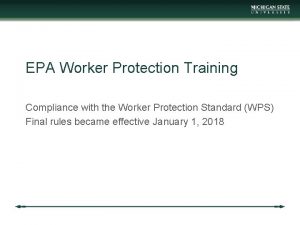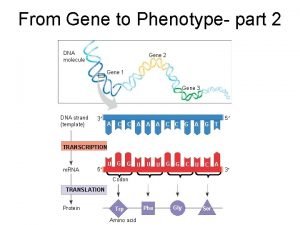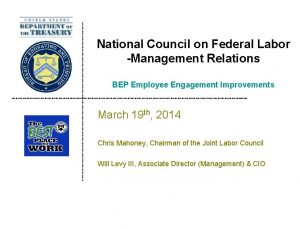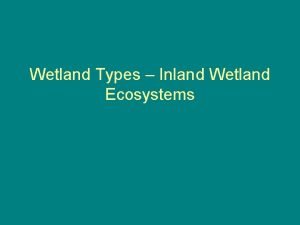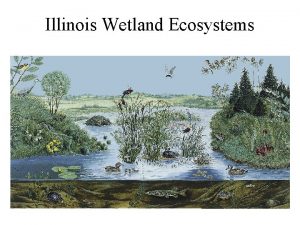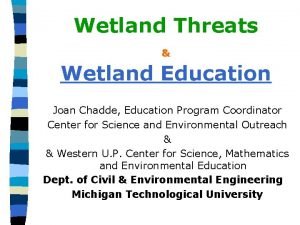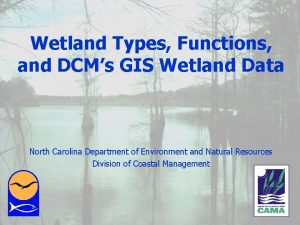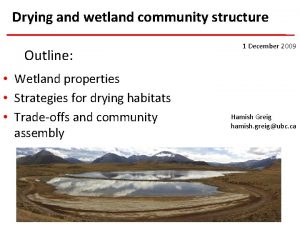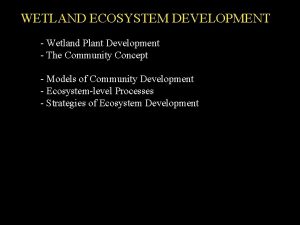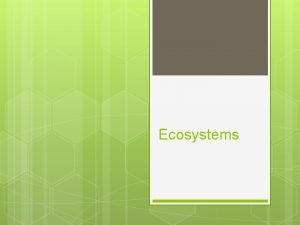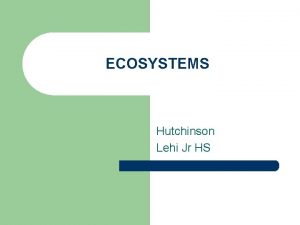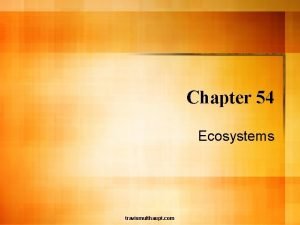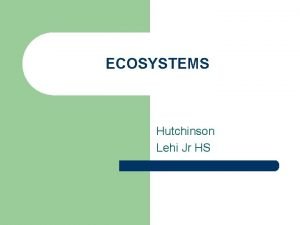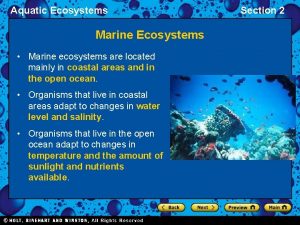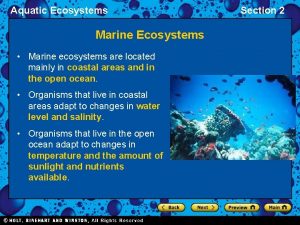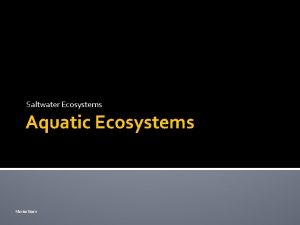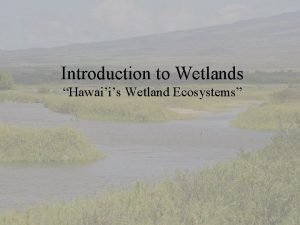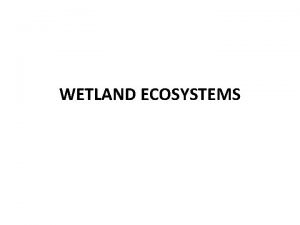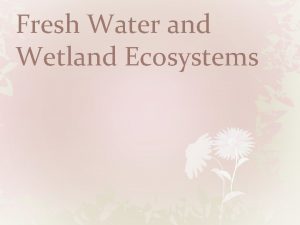Ecosystems 4 th Grade Wetland Ecosystems USA EPA





















- Slides: 21

Ecosystems 4 th Grade: Wetland Ecosystems USA EPA, Region 10 Eco. Learn

Today: Today you will learn: What a wetland is; the different types of wetlands; how the different parts of a wetland work together to make a unique ecosystem; and why wetlands are important Keywords: Ecosystem Wetland

Wetlands are important because they are an ecosystem that provides very valuable services: flood prevention, filtering water to decrease water pollution; and are home to plants and animals.

What is a Wetland? What do you think it means? There are many kinds of wetlands. All of the continents except Antarctica have wetland ecosystems.

Swamp Marsh Fen Bog Photos from EPA wetlands site

Marsh Habitat (can be fresh or salt water) Cattail (freshwater) Muskrat den Clapper Rail (salt water) Great Egret (salt water)

FENS BOGS SWAMPS Pitcher plant Lady Slipper Warbler Salamander Black bear Button Bush

Building a Wetland Model

Step 1: Fill half of the pie pan with clay to represent land. The empty part of the pie pan represents water (a lake, river, ocean). Shape the clay so that it slopes gradually towards the water.

Step 2: Places pieces of a sponge in a line along the edge of the clay (basically dividing the land from the water). The sponge represents the wetland. Make sure the sponges completely separate the clay from the empty part of the pie tin and that the sponges lie flat on the bottom of the pan. On the clay, mark a spot near the sponge that represents a house.

Step 3: Explain to students the benefits of wetlands and that you are going to explore them in your model. Wetlands can help reduce floods, filter out pollutants, prevent erosion, and have a wide variety of plants and animals.

Step 4: Ask the students what will happen if it rains on the land. After discussing, try it! Pour water onto the clay and have the students write their observations down. The water runs down the slope of the land. Then some of the water is slowed down by the wetland (the sponge), and the rest is absorbed by the wetland. The “house” is not flooded, but remains safe.

Step 5: Now have the students try the same experiment without the wetland. Have them take the sponge out of their model and try the rain experiment again. This time, the “rain” will run off the land quickly and might even flood part of the land. This shows how a wetland can help prevent flooding, and also can help stop erosion. Point out what happens to the house in this event – it is a lot closer to the water or is even flooded! Sometimes wetlands are removed in order to build houses – how do you think these housing developments handle storms?

Step 6: Empty the water out of your model.

Step 7: Now, mix dirt with colored glitter (small pieces of glitter will work best). Explain to the students that this represents dirt that has pollution in it (the glitter is pollution). Spread some of the soil over the “land” (clay). With the “wetland” (sponge) in place, make it rain. Have the students write down what they observe. The soil and glitter moved across the land some of it ended up in the lake/ocean/river. Have the students take a sample of the water that flowed into the bottom of the pie pan.

Step 8: Have the students clean out their model and then repeat the experiment without the wetland (no sponge). Once the students have taken a sample of the water that ended up in the pan, have them compare the two samples. What happened? Why?

Step 9: The experiment with the wetland does not have as much soil or as much glitter compared to the one with no wetland. That is because the wetland can help trap the soil (prevent erosion) and filter out pollutants from the water! Have the students brainstorm what could have helped stop the soil from running out into the bottom of the pie tin. What do real wetlands have that could help stop erosion? Wetlands have plants with stems and roots that help hold together the land stop pollutants and soil from going into bodies of water.

Step 10: Ask students why we would not want pollution going into the water. Brainstorm reasons on the board together as a class. Examples include: poison fish, crabs, birds, pollute potential drinking water and food (fish, crabs, etc. ), unsafe for human activities like swimming. Then brainstorm why we wouldn’t want soil going into the water. Examples include: erosion problems if too much soil leaves the land, stop sunlight from going into the water (killing the plants that live in the water), make it hard for animals that live in the water to see

Practice: Have each student create a web of different parts of their wetland model. On a piece of paper, write down all of the different components of their wetland For example: the land, the ocean, the wetland “buffer zone”, the different types of plants, the different types of animals. Draw lines between things that interact with each other, work together, eat one another, etc. Label your lines on how these different components of the wetland ecosystem work together How plants and the land work together to prevent erosion, or how the birds eat the fish.

Homework: Do a homework project in which you research a local wetland habitat. You can make a drawing of their particular habitat labeling key feature (i. e. plants, animals, where it is located, etc. ).

Eco. Learn Developed by the Environmental Protection Agency With support from Department of State Virtual Students of Foreign Service Interns https: //www. epa. gov/education For more information: hanft. sally@epa. gov or salazar. viccy@epa. gov US EPA Region 10 Eco. Learn
 Freshwater wetlands purify water by
Freshwater wetlands purify water by Submerged gravel wetland
Submerged gravel wetland What does a wetland do for the environment
What does a wetland do for the environment Differentiate wetland and dryland preparation
Differentiate wetland and dryland preparation Inland wetland
Inland wetland Biome sb
Biome sb Types of natural science
Types of natural science Interactions within ecosystems grade 7
Interactions within ecosystems grade 7 Grade 7 ecosystems
Grade 7 ecosystems Ecosystems jeopardy 5th grade
Ecosystems jeopardy 5th grade Gacepa admin
Gacepa admin Icaew apprenticeships level 7
Icaew apprenticeships level 7 Danish epa
Danish epa Epa region 4 administrator
Epa region 4 administrator Swmms
Swmms Epa bildungsstandards
Epa bildungsstandards Epa physik
Epa physik Awia erp template
Awia erp template Epa in medical education
Epa in medical education Epa compliance training
Epa compliance training Epa: dbg
Epa: dbg Epa in ribosome
Epa in ribosome
